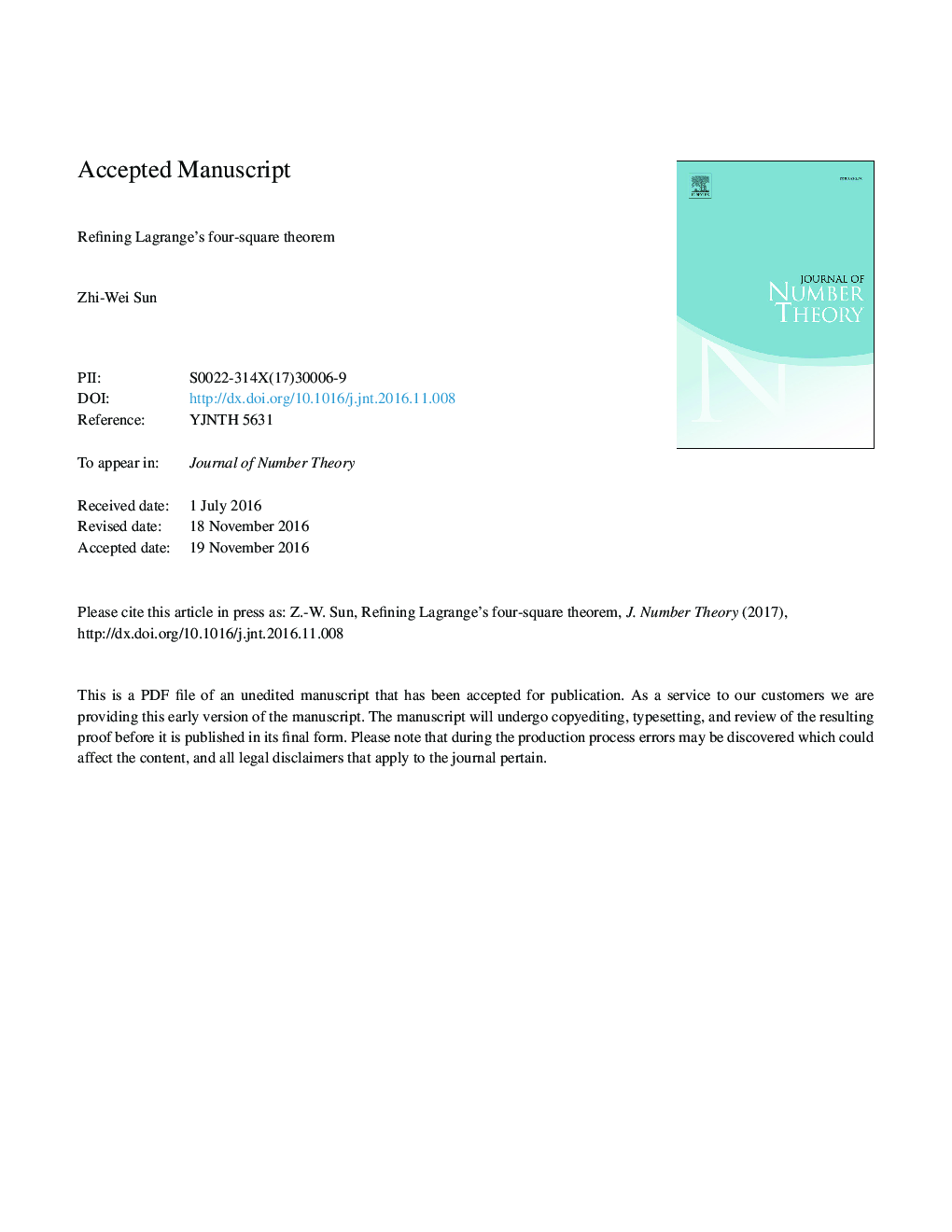| Article ID | Journal | Published Year | Pages | File Type |
|---|---|---|---|---|
| 5772588 | Journal of Number Theory | 2017 | 24 Pages |
Abstract
Lagrange's four-square theorem asserts that any nâN={0,1,2,â¦} can be written as the sum of four squares. This can be further refined in various ways. We show that any nâN can be written as x2+y2+z2+w2 with x,y,z,wâZ such that x+y+z (or x+2y, or x+y+2z) is a square (or a cube). We also prove that any nâN can be written as x2+y2+z2+w2 with x,y,z,wâN such that P(x,y,z) is a square, whenever P(x,y,z) is among the polynomialsx,2x,xây,2xâ2y,a(x2ây2)(a=1,2,3),x2â3y2,3x2â2y2,x2+ky2(k=2,3,5,6,8,12),(x+4y+4z)2+(9x+3y+3z)2,x2y2+y2z2+z2x2,x4+8y3z+8yz3,x4+16y3z+64yz3. We also pose some conjectures for further research; for example, our 1-3-5-Conjecture states that any nâN can be written as x2+y2+z2+w2 with x,y,z,wâN such that x+3y+5z is a square.
Related Topics
Physical Sciences and Engineering
Mathematics
Algebra and Number Theory
Authors
Zhi-Wei Sun,
